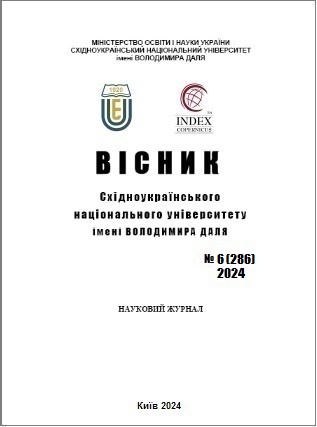Application of physics informed neural networks (pinn) in quality control of the haber-bosch process product
DOI:
https://doi.org/10.33216/1998-7927-2024-286-6-190-198Keywords:
Physics-Informed Neural Networks, PINNs, quality control, Haber-Bosch process, ammonia synthesis, digital twinAbstract
The article considers the possibilities of using Physics-Informed Neural Networks (PINNs) for quality control of ammonia produced by the Haber-Bosch process. The ammonia synthesis process is a highly nonlinear and important industrial process where product stability and high quality are critical. Traditional quality control methods face limitations, such as the lack of direct online measurements of key parameters and the need for large amounts of data to build models. PINNs offer a hybrid approach that combines physical laws of the process with deep learning capabilities, allowing for accurate real-time prediction of ammonia concentration and purity based on a limited set of sensors. The paper analyses current research on the use of neural networks in industrial processes and
justifies the architecture of a PINN model for monitoring product quality in ammonia synthesis. The advantages of PINNs over traditional methods are shown, such as reducing the need for data, providing physically consistent results, and integrating into existing control systems to improve production efficiency. It is proved that physically based neural networks offer a new level of intelligent control for chemical processes. In the case of ammonia synthesis, this approach allows solving long-standing quality control problems in a new way by combining science and data. The implementation of PINN in ammonia production will potentially provide higher product quality, operational flexibility and process sustainability, contributing to the progress towards Industry 4.0 [20] in the chemical industry. This is a step towards smarter and more efficient plants, where every critical process is under the reliable supervision of combined human and machine intelligence. The technology is expected to increase process yield and stability, reduce energy consumption (through optimal operating conditions) and improve safety (through early detection of deviations and potential malfunctions, which can have a significant economic impact on a global industry scale and reduce natural gas consumption and CO₂ emissions.
References
1. Ahmed, Hafiz Sharjeel, et al. "Sustainable pathways to ammonia: a comprehensive review of green production approaches." Clean Energy 8.2, 2024: 60-72.
2. Erfani, Navid, Luqmanulhakim Baharudin, and Matthew Watson. "Recent advances and intensifications in Haber-Bosch ammonia synthesis process." Chemical Engineering and Processing-Process Intensification, 2024: 109962.
3. Humphreys, John, Rong Lan, and Shanwen Tao. "Development and recent progress on ammonia synthesis catalysts for Haber–Bosch process." Advanced Energy and Sustainability Research 2.1 (2021): 2000043.
4. Capdevila-Cortada, Marcal. "Electrifying the haber–bosch." Nature Catalysis 2.12, 2019: 1055-1055.
5. Chai, Wai Siong, et al. "A review on ammonia, ammonia-hydrogen and ammonia-methane fuels." Renewable and Sustainable Energy Reviews 147, 2021: 111254.
6. Awad, Omar I., et al. "Characteristics of NH3/H2 blend as carbon-free fuels: A review." International Journal of Hydrogen Energy 48.96, 2023: 38077-38100.
7. Wang, Du, et al. "Numerical study of the premixed ammonia-hydrogen combustion under engine-relevant conditions." International Journal of Hydrogen Energy 46.2, 2021: 2667-2683.
8. Zhu, Baoyu, et al. "A physics-informed neural network that considers monotonic relationships for predicting NOx emissions from coal-fired boilers." Fuel 364, 2024: 131026.
9. Xu, Tao, et al. "Synthesis, characterization, and antibacterial activity of N, O-quaternary ammonium chitosan." Carbohydrate research 346.15, 2011: 2445-2450.
10. Raissi, Maziar, Paris Perdikaris, and George E. Karniadakis. "Physics-informed neural networks: A deep learning framework for solving forward and inverse problems involving nonlinear partial differential equations." Journal of Computational physics 378, 2019: 686-707.
11. Cuomo, Salvatore, et al. "Scientific machine learning through physics–informed neural networks: Where we are and what’s next." Journal of Scientific Computing 92.3, 2022: 88.
12. Li, Kai-Qi, et al. "A PINN-based modelling approach for hydromechanical behaviour of unsaturated expansive soils." Computers and Geotechnics 169, 2024: 106174.
13. Weng, Yuting, and Dezhi Zhou. "Multiscale physics-informed neural networks for stiff chemical kineti
14. Rao, Yongming, et al. "GFNet: Global filter networks for visual recognition." IEEE Transactions on Pattern Analysis and Machine Intelligence 45.9, 2023: 10960-10973.cs." The Journal of Physical Chemistry A 126.45, 2022: 8534-8543.
15. Cabral, Thales W., et al. "Load Recognition in Home Energy Management Systems Based on Neighborhood Components Analysis and
Regularized Extreme Learning Machine." Sensors 24.7, 2024: 2274.
16. Smith, Collin, Alfred K. Hill, and Laura Torrente-Murciano. "Current and future role of Haber–Bosch ammonia in a carbon-free energy landscape." Energy & Environmental Science 13.2, 2020: 331-344.
17. Genedy, Rana A., et al. "A physics-informed long short-term memory (LSTM) model for estimating ammonia emissions from dairy manure during storage." Science of The Total Environment 912, 2024: 168885.
18. Kouvaritakis, Basil, and Mark Cannon. "Model predictive control." Switzerland: Springer International Publishing 38.13-56, 2016: 7.
19. Patel, Janak M., et al. "Parameter Tuning and Modeling of a Rotary Kiln using Physics-Informed Neural Networks." ICML, 2024. AI for Science Workshop.
20. Ghobakhloo, Morteza. "Industry 4.0, digitization, and opportunities for sustainability." Journal of cleaner production 252, 2020: 119869.

